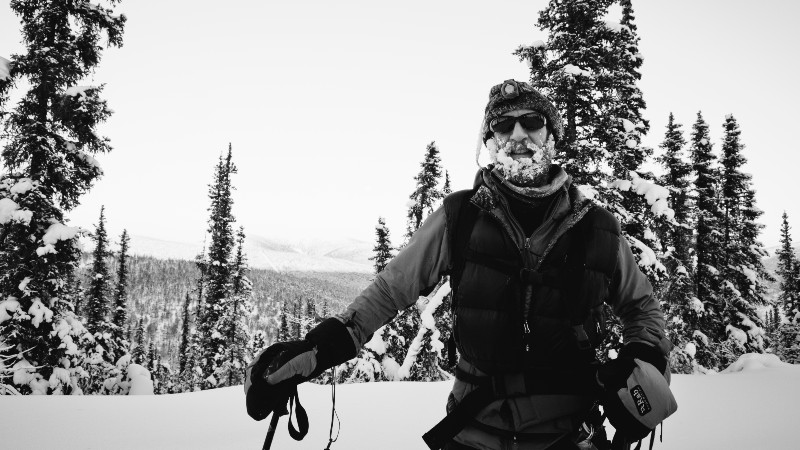Thrill-seeking Oxford Brookes academic embarking on 1,000 mile trek through Alaska

A thrill-seeking lecturer from Oxford Brookes University is competing in a 1,000 mile race across Alaska hauling a sled through thick snow and sub-zero conditions.
Mark Hines, a Senior Lecturer in Exercise Physiology, set off on the Iditarod Trail Invitational race on Sunday 25 February, and hopes to complete the challenging journey in 30 days or less. He is one of just 105 athletes from around the world attempting the gruelling course, and is one of three competitors representing the UK.
At Oxford Brookes, Mark regularly lectures on topics including the effects of exercise in extreme cold for Sports Science, Physical Activity and Health students. He also leads a fieldwork module in which students are put into demanding environments, such as trekking across the Atlas Mountains in Morocco, in order to measure the effects on human performance.
The Iditarod Trail Invitational started just outside the city of Anchorage and takes competitors across the rugged and unforgiving terrain of Alaska to the finish line in the city of Nome. Participants can complete a 350 or 1,000 mile version and can choose to cycle, ski or travel on foot.
Mark is attempting the 1,000 mile version of the Iditarod Trail and is pulling along a sled containing all his survival gear, food and equipment, including a sleeping bag designed to cope with temperatures as low as -50C.
Ahead of the race, Mark said: “The Iditarod Trail Invitational is the toughest of the Arctic ultra endurance races, and by far the most remote. Conditions are going to be particularly challenging this year, with deep snow and warm temperatures, which will combine to make for slow progress during the first week or two. If the long-range forecasts are reliable, we can expect temperatures to drop after that, which will harden-up the trail and make the going much faster and easier. Perfect temperatures are between -15C and -40C.
“There should be plenty of clear days when the scenery is incredibly beautiful, and it’s a privilege to move across the landscape, alone but for nature. Warmer daytime temperatures will mean it is better to make progress through the night, which provides great opportunities to enjoy seeing the northern lights dancing overhead. Outside of these distractions, my mind is usually preoccupied with identifying the various tracks that cover the ground - wolves, lynx, and moose are the biggest and most common inhabitants at this time of year (the bears are sleeping).”
The history of the Iditarod trail
The Iditarod Trail Invitational is the human-powered version of the historic Iditarod Trail Sled Dog Race which is contested along the route between Anchorage and Nome. Since it was established in 1973, mushers - the term for a dog sled driver - and a team of between 12 to 14 dogs cover the distance in the annual competition.
The history of the Iditarod Trail dates back to the winter of 1925 when a diptheria epidemic broke out in Nome. There were concerns that the disease would kill thousands if an antitoxin medicine was not found. The nearest batch of life-saving antitoxin was tracked down in Anchorage, some 1,000 miles away. Alaska’s sub-zero temperatures meant that transportation by sea or sky was not possible, so dog powered sleds were used to deliver the supplies. A relay team of 150 dogs and 20 mushers successfully transported the antitoxin across the icy wilderness in 127.5 hours. Now the memory of the 1925 Iditarod Trail journey lives on with the annual dog sled and human-powered race that take place each year.
Mark’s progress through the race can be tracked on the Iditarod Trail Invitational website.
